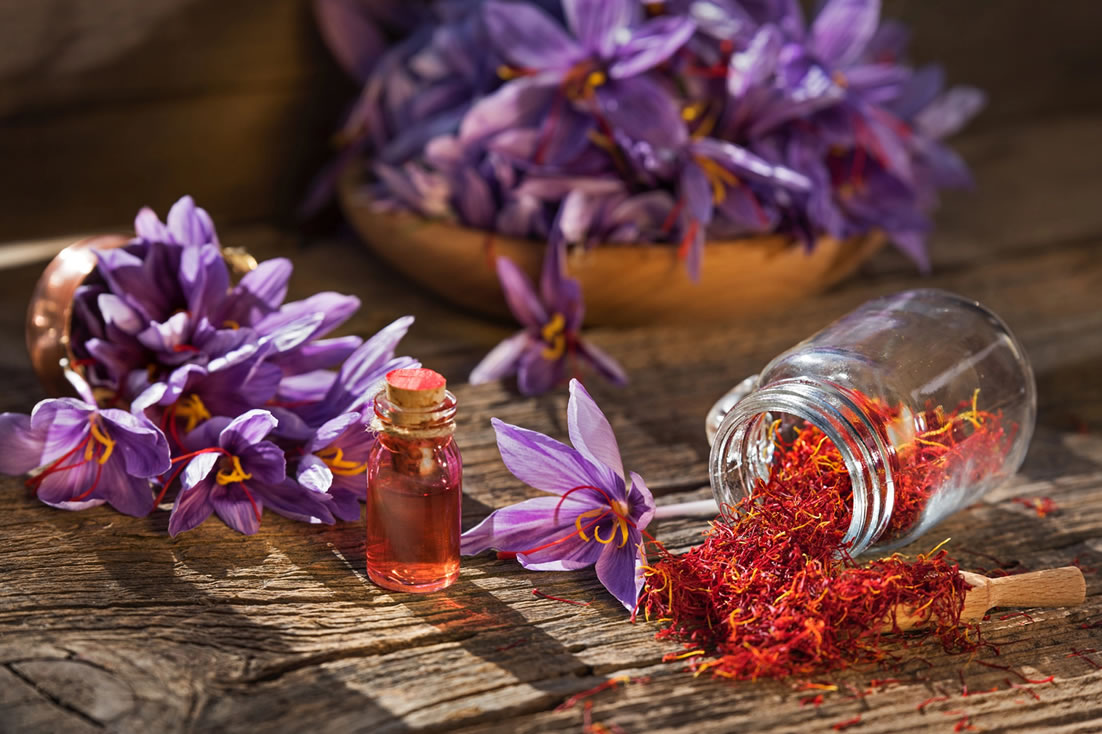Saffron or Crocus


Good to know
A precious condiment of ancient civilizations, saffron (Crocus Sativus) has remained among the world’s most costly substances throughout history while its use spans more than 3.000 years. Also known as crocus, it takes 75,000 saffron flowers to make one pound of saffron spice, which is what makes it so expensive. Renowned for its beneficial properties since antiquity, Greek saffron (called crocus of Kozani) is regarded as one of the finest varieties in the world and it has been used as a fragrance, dye, medicine and cosmetic.
Etymologically, the word saffron stems from the Persian word zarparān which means “golden leaves” while the word crocus derives from the word croci, which means “the tread used for loom weaving”. In Greek mythology, Crocus was a young man who was killed by accident by his friend, the god Hermes. The blood that fell on the ground, dyed the flowers on site and thus; the plant was created.
Also called “red gold” and “life elixir”, saffron is a powerful natural aphrodisiac which has anti-aging properties and contains an impressive variety of antioxidants. It belongs in the iris family Iridacea and it is believed that it originated in Persia, where it was used as a currency and was associated with luxury.
An important preparation step before using saffron is to soak the threads in hot water for about 10 to 20 minutes; then, add both the saffron and the liquid to your recipe. Its vivid crimson colour, iodine-like fragrance and bittersweet taste will take your culinary creations to a whole new level. Be cautious though; saffron can overpower a dish if used in large quantities.


Soil preparation
It does not require special handling as it is planted in mountainous, sloping, stony soils. Before planting, tillage is carried out by hand to the extent possible.
Season – planting density
In the middle of autumn, after the first rains. Alternatively early spring. Planting density 2,000 – 2,500 plants per hectare (0.70 – 1 m between rows X 0.50 – 0.60 m on rows).
Soil requirements – Fertilization
It adapts well to stony soils, draining soils and requires high altitude (>500m). Hot areas, with flat plots of land that "dominate water", are unsuitable.
Irrigation
It can also be cultivated as a dry plant, but it makes good use of water when it is given as long as it is in small doses and does not remain in the root system of the plant as it is sensitive to root rot.
Harvesting – Drying
Harvest in full bloom in the months of June – August depending on the cultivation altitude. Only the flowering stems are harvested. Dry in bundles, hung upside down in a shady cool place
CONTACT US FOR MORE INFORMATION
ABOUT OUR PRODUCTS



